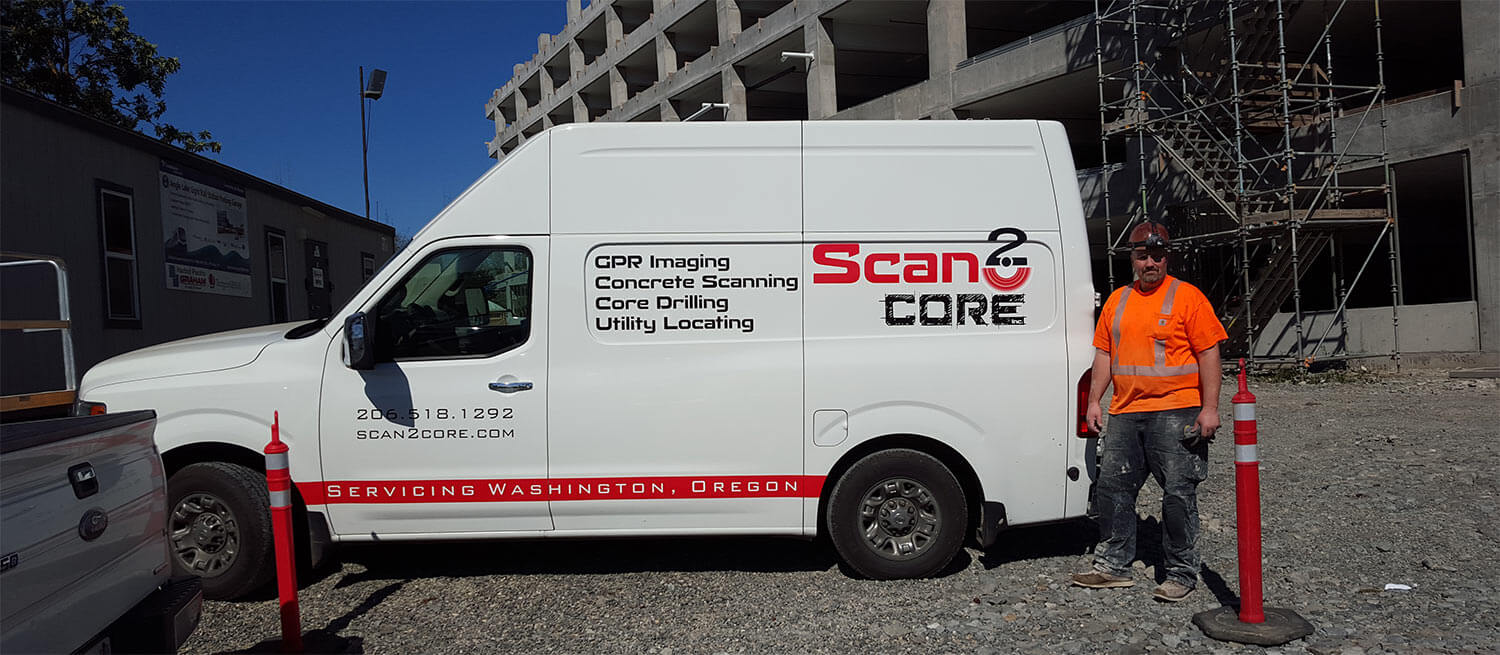Quality Assurance through Concrete Scanning and Imaging
Wiki Article
Beyond the Surface area: Unraveling the Tricks of GPR Scanning for Concrete Applications
Are you all set to dive deeper right into the world of GPR scanning for concrete applications? In this short article, we will unwind the keys and provide you with an extensive understanding of this cutting-edge technology. Discover the basics of GPR scanning, discover how it works, and check out ideal techniques for conducting scans on concrete surfaces. Get ready to translate results and discover sophisticated methods for concrete evaluation. It's time to exceed the surface area and unlock the hidden possibility of GPR scanning.The Basics of GPR Scanning for Concrete Applications
GPR scanning is commonly used to assess the condition of concrete frameworks. When you use GPR scanning, you can easily unravel the keys that exist under the surface area of the concrete. It provides you with important info regarding the inner framework of the concrete and assists you recognize any kind of prospective concerns or defects.With GPR scanning, you can rapidly and non-destructively figure out the thickness of the concrete slab and find any kind of gaps or delaminations within it - Concrete Scanning and Imaging. This information is crucial for reviewing the architectural integrity of the concrete and planning any kind of needed repair work or upkeep
Moreover, GPR scanning enables you to detect the visibility of strengthening steel bars, likewise called rebar, within the concrete. This is essential for analyzing the stamina and resilience of the framework, in addition to for making sure proper building and construction practices were adhered to.
In addition, GPR scanning can detect the existence of dampness or water infiltration within the concrete. This is specifically crucial as moisture can cause corrosion of the enhancing steel, which can compromise the structural stability of the concrete with time.

Comprehending the Technology Behind GPR Scanning
To recognize how it works, you need to understand the innovation behind GPR scanning. Ground Permeating Radar (GPR) is a non-destructive testing method that utilizes electro-magnetic waves to identify subsurface things and attributes. It includes 3 major elements: a control unit, an antenna, and a display screen system. The control system sends high-frequency radio waves into the ground through the antenna. These waves then get better when they encounter modifications in the subsurface materials. The antenna receives the mirrored waves and sends out the information back to the control system. The control unit processes this data and shows it on the screen of the screen system.GPR see this scanning operates on the principle of time traveling. The control system measures the moment it considers the waves to travel to the subsurface and jump back. By examining the time and strength of the shown waves, GPR can establish the deepness and place of objects within the concrete. Various materials have special electromagnetic properties, which impact the method the waves are reflected. This permits GPR to distinguish in between concrete, rebar, voids, and various other subsurface features.
Best Practices for Carrying Out GPR Checking on Concrete

Translating GPR Scanning Results for Concrete Applications
Once you have actually performed the GPR checks on the concrete, it's time to analyze and translate the outcomes to acquire beneficial understandings. The analysis of GPR scanning results is a crucial action in recognizing the problem of the concrete and determining any type of possible concerns. When evaluating the GPR data, you ought to begin by looking for anomalies or variants in the signals. These abnormalities could indicate the visibility of gaps, cracks, or various other defects within the concrete. Take notice of any kind of changes in signal deepness, strength, or form, as these can provide essential info regarding the concrete's problem.In addition to determining problems, the interpretation of GPR outcomes can also aid establish the density and structure of different concrete layers. By evaluating the representations and diffractions in the GPR information, you can approximate the deepness and thickness of numerous layers, such as the concrete cover, reinforcement, or any various other ingrained aspects. This information is crucial for analyzing the architectural stability of the concrete and planning any kind of required repair work or maintenance job.

Advanced Strategies for GPR Scanning in Concrete Analysis
By utilizing advanced strategies, you can improve the accuracy and resolution of GPR scans for examining concrete structures (Concrete Scanning and Imaging). One such technique is called multi-frequency GPR scanning. On the whole, by using these advanced techniques, you can substantially enhance the effectiveness of GPR scanning in assessing concrete structures.Conclusion
So there you have it - the keys of GPR scanning for concrete applications Concrete Scanning and Imaging have been deciphered. Currently that you understand the fundamentals of this modern technology and just how it functions, you can with confidence conduct GPR scanning on concrete frameworks.Discover the fundamentals of GPR scanning, learn exactly how it functions, and discover best methods for performing scans on concrete surfaces. When you utilize GPR scanning, you can quickly unravel the keys that exist below the surface area of the concrete. The interpretation of GPR scanning results is a critical action in comprehending the problem of the concrete and determining any kind of potential concerns. Overall, by utilizing these sophisticated strategies, you can greatly improve the efficiency of GPR scanning in assessing concrete frameworks.
Currently that you understand the basics of this technology and exactly how it works, you can confidently carry out GPR scanning on concrete frameworks.
Report this wiki page